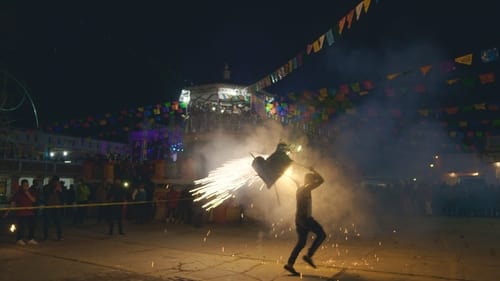Trisha Ziff
약력
Director Trisha Ziff is originally from London but lives and works in Mexico City. She is a curator of contemporary photography, a filmmaker, and a Guggenheim scholar. Ziff is the producer of documentary Oaxacalifornia (US/UK), co-producer of My Mexican Shiva (Mexico), and Executive Producer of 9months 9days (Mexico). She has also worked in the North of Ireland, where she founded Camerawork Derry, a photography and film workshop in the 1980’s.

Writer
The Mejia family emigrated from Oaxaca to Fresno, California 40 years ago. Filmmaker Trisha ZIff filmed the family in 1996, and returns now to see the changes that have settled over them, and follows the family on their return to Mexico.

Producer
The Mejia family emigrated from Oaxaca to Fresno, California 40 years ago. Filmmaker Trisha ZIff filmed the family in 1996, and returns now to see the changes that have settled over them, and follows the family on their return to Mexico.

Director
The Mejia family emigrated from Oaxaca to Fresno, California 40 years ago. Filmmaker Trisha ZIff filmed the family in 1996, and returns now to see the changes that have settled over them, and follows the family on their return to Mexico.

Writer
유명 셰프 가브리엘라 카마라는 두 개의 레스토랑을 운영한다. 멕시코시티의 ‘콘트라마르’와 샌프란시스코의 ‘칼라’. 이곳엔 식자재에 대한 원칙, 직원을 대하는 철학 등 특별한 문화가 숨 쉰다. 다른 듯 같은 두 주방의 이야기 속으로.

Director
유명 셰프 가브리엘라 카마라는 두 개의 레스토랑을 운영한다. 멕시코시티의 ‘콘트라마르’와 샌프란시스코의 ‘칼라’. 이곳엔 식자재에 대한 원칙, 직원을 대하는 철학 등 특별한 문화가 숨 쉰다. 다른 듯 같은 두 주방의 이야기 속으로.

Writer
A pair of identical twins, one a photographer and the other a painter, have very little in common.

Director
A pair of identical twins, one a photographer and the other a painter, have very little in common.

Director
A film about fragility; about a man obsessed with photographing the accident who discovered that the fate of others was his way of connecting to life. When does the image of the accident become the object of desire? Following the footsteps of Metinides and the work of contemporary tabloid photographers, we discover Mexico City through a narrative of crime scenes and accidents; rubbernecking though Metinides’ Gaze.

Screenplay
A film about fragility; about a man obsessed with photographing the accident who discovered that the fate of others was his way of connecting to life. When does the image of the accident become the object of desire? Following the footsteps of Metinides and the work of contemporary tabloid photographers, we discover Mexico City through a narrative of crime scenes and accidents; rubbernecking though Metinides’ Gaze.

Screenplay
The story of the recovery of the negatives of thousands of photos taken by three photographers during the Spanish Civil War that were found seventy years later in a suitcase, inside a closet in Mexico City.

Director
The story of the recovery of the negatives of thousands of photos taken by three photographers during the Spanish Civil War that were found seventy years later in a suitcase, inside a closet in Mexico City.

Director
Examines the history and legacy of the photo Guerrillero Heroico taken by famous Cuban photographer Alberto Díaz Gutiérrez. This image has thrived for the decades since Che Guevara's death and has evolved into an iconic image, which represents a multitude of ideals. The documentary film explores the story of how the photo came to be, its adoption of multiple interpretations and meanings, as well as the commercialization of the image of Ernesto "Che" Guevara.

Producer
Sylvia Stevens' 1995 documentary introduced viewers to the Mejía family of Fresno, California, whose parents emigrated from Mexico's beautiful but impoverished southern province of Oaxaca to make a living in the U.S. Despite the family's thriving landscaping business and thoroughly assimilated children, the ties to the family's ancestral home are strong, maintained each year with a family trip back for their home village of Jaltepec's fiesta in honor of Saint Mary Magdalene.

Screenplay
Sylvia Stevens' 1995 documentary introduced viewers to the Mejía family of Fresno, California, whose parents emigrated from Mexico's beautiful but impoverished southern province of Oaxaca to make a living in the U.S. Despite the family's thriving landscaping business and thoroughly assimilated children, the ties to the family's ancestral home are strong, maintained each year with a family trip back for their home village of Jaltepec's fiesta in honor of Saint Mary Magdalene.






